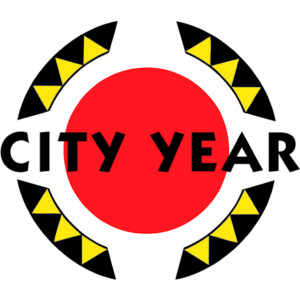When I was at Google, we talked a lot about the changing nature of leadership. We talked about the mindset shifts that would be required to meet the shifting conditions in our industry. We made a huge investment in teaching leaders systems thinking and complexity to match the uncertainty of the world around us. And we infused self and situational awareness into every aspect of our leadership philosophy and development practices. Our goal was to develop more human leaders who would be ready to face the challenges of the future.
It was good stuff. Really good stuff. But, it was missing something. For all of the great things we talked about and practiced, we never really talked about trust.
Trust is a funny thing. It permeates nearly every aspect of life, and it shapes our decision-making, our beliefs, and our actions more than any other element of human experience I can think of.
We trust that the food we buy won’t poison us.
We trust that our doctors will protect us from illness.
We trust that our bridges will hold when we drive over them.
And then something happens. Something that convinces us that our trust is misplaced. That we need to be more wary, more guarded, more prepared. We slip into survival mode, with a belief that the bad thing that just happened will most certainly happen again, and the good thing that’s happened fifty times before, won’t.
This reaction isn’t limited to our personal lives. Our trust issues show up at work, too. Except when our professional bridges collapse – when our relationships are threatened or broken – we seem to have far more trouble rebuilding and mustering up enough trust to drive back across. More than ever, leaders need to set the example for their teams when it comes to building trust and extending grace at work.
Here are a few starting points for any leader who’s interested in building a truly inclusive, resilient, high performing team:
Replace systems of control
The biggest thing standing in the way of most things at work is the need for control. We believe that by monitoring, tracking, checking in, and reporting back that we’re keeping things moving. In reality, we’re slowing them down immensely. A control-based culture, centered around asking for permission vs. operating within minimal constraints also stifles creativity, zaps energy, and decreases engagement. In turn, this decreases the quality of results, and it obliterates intrinsic accountability. To break this vicious cycle (because systems of control often lead to more systems of control), take a hard look at your team norms, practices, and even company policies. Are they instrumented to breed trust? Or, are they there to keep tabs on employees and hold them accountable to standards that are controlled by leadership? A few systems that are typically instrumented for control include: performance management, feedback, and project retrospectives. They’re often ripe, and ready for a revamp.
Respond to mistakes compassionately
How leaders respond when things go wrong is quite possibly the most critical aspect of their leadership style. When everything’s going great, it’s easy to be a compassionate, curious leader who’s focused on learning and growth. It’s when things hit the fan - when circumstances are at their worst - those leaders need to show up at their best. A growing mountain of research has shown that compassionate leadership isn’t just a nice-to-have; it’s a critical business driver that boosts employee engagement, wellbeing, and performance. And, we know that leaders who are curious and encourage autonomous decision-making are far more effective than those who keep decisions concentrated at the top and bark orders at subordinates (code name: “delegating”). When things go wrong, resist the urge to jump to conclusions and pass judgment. Take a moment to focus on learning. Ask yourself: “What questions can I ask to truly learn more about this person’s experience? How can I be curious and compassionate in this moment?” Shift from blame and shame to curiosity and learning. You may be surprised by what a difference it makes.
Recover lasting psychological safety
Rome wasn’t built in a day, and neither is psychological safety (or in some cases, a 3-day offsite). I can’t tell you how many teams I’ve been on (and how many I’ve coached) who have spent a few days unpacking their feelings, sharing their grievances, and brainstorming ideas for a better future only to return to the same toxic environment they thought they were leaving behind. Interventions intended to produce systemic change are destined for failure when they’re designed for intensity instead of consistency. The key to creating lasting psychological safety is in the individual interactions a team has with each other every day. Leaders must demonstrate and insist on behaviors that build trust, and dismantle toxicity. Gossip, manipulation, intimidation, and gaslighting are just a few examples of behaviors that are far too common in the workplace and often inadequately addressed by leaders. Consider creating a written agreement with your team members, that everyone consents to, outlining the ways in which you will handle conflict when it comes up (and trust me, it definitely will!). Adopt a “no gossip” policy and model the art of being curious over the compulsion to be right. It will take time and patience, but the journey to lasting psychological safety starts with you - the leader.
A leader’s job is to bring out the greatness in every employee through curiosity, compassion, and trust. The world of work is at a point where we need to nurture performance, not manage it. Where the future of the organization and the nature of our work is a collective exercise - co-created, agreed to, and evolved over time. Where decisions and power are highly distributed, not concentrated at the top; just look at the rise of DAOs and web3 if you want a glimpse into what employees are going to be asking for in another few years.
I believe that once we embrace the fact that the very fabric of leadership has changed - once we get comfortable abandoning the methods and models we’ve relied on until now - I believe we’re going to really like this new future. It certainly seems bright from where I’m standing.














